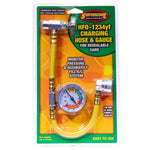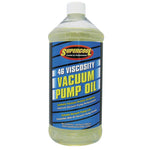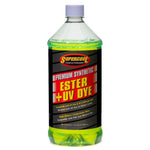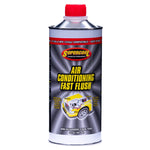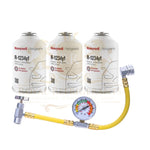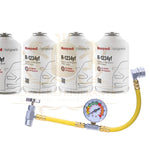You have no items in your shopping cart.
Everything You Need to Know About Using R410A Instead of R134A for HVAC and Automotive Applications
When it comes to refrigerants in air conditioning systems, one of the most common questions technicians and car owners ask is: “Can I use R410A instead of R134A?”
The short answer is NO — and here’s why.
Understanding the Difference Between R134A and R410A
Before deciding to swap refrigerants, it’s important to know what makes them different.
| Property | R134A | R410A |
|---|---|---|
| Type | Single refrigerant (HFC-134a) | Blend of R32 & R125 |
| Operating Pressure | Low to medium | Very high |
| Common Use | Automotive A/C, domestic refrigerators | HVAC split systems, heat pumps |
| Oil Type | PAG or POE | POE only |
| GWP (Global Warming Potential) | ~1430 | ~2088 |
R134A and R410A may sound similar because both are HFC refrigerants, but their operating pressures, oils, and system designs are completely different.

Why You Shouldn’t Use R410A in an R134A System
1. High Pressure Danger
R410A runs at almost 1.6 times higher pressure than R134A. That means if you charge an R134A compressor or lines with R410A, the system could burst, leak, or explode. The compressor is not rated for such pressure.
2. Oil Incompatibility
R134A systems (especially in cars) use PAG oil, while R410A systems require POE oil. These oils do not mix well and can cause poor lubrication and compressor failure.
3. Compressor and Component Design
Every part — compressor, condenser, evaporator, and expansion valve — is designed for a specific refrigerant. Using R410A in an R134A system will cause inefficient cooling, overheating, and system damage.
4. Metering Device and Flow Rate
The metering device (TXV or orifice tube) controls refrigerant flow. Since R410A has different properties, it will not flow correctly in an R134A system, resulting in low cooling performance.
5. Regulatory and Environmental Issues
Using an unapproved refrigerant mix can void warranties, violate environmental regulations, and make the system unsafe for service.
What Are the Right Alternatives?
If your system runs on R134A, and you are looking for replacements, here are the safe and legal options:
🔹 Automotive Applications:
- R1234yf — the most common modern replacement (used in new vehicles)
- R152a — in some regions as a low-cost alternative (flammable, so caution required)
🔹 HVAC Applications:
- For older R22 or R407 systems, use approved retrofits like R407C or R32 (if system is compatible)
- Never retrofit an R134A system with R410A unless the manufacturer specifically approves it (which is rare)
What Happens If You Accidentally Mix R410A and R134A?
Mixing these refrigerants will cause:
- Pressure imbalance
- Oil separation
- Reduced cooling
- Possible compressor lock-up
Always recover the mixed refrigerant, flush the system, and recharge with the correct one.
Professional Recommendation
If you’re unsure which refrigerant your system uses:
- Check the label on your compressor or system.
- Consult the manufacturer’s manual.
- Hire a certified HVAC technician for diagnosis or conversion.
Never experiment with refrigerant replacements — the results can be dangerous and costly.
Conclusion
Using R410A instead of R134A is not recommended for any HVAC or automotive system. The two refrigerants differ in pressure, oil compatibility, and system design. To ensure safety, performance, and compliance, always use the refrigerant specified by the manufacturer or approved retrofit alternatives.
✅ Key Takeaways
- R410A operates at higher pressure than R134A — unsafe to substitute.
- Oil types are incompatible (PAG vs POE).
- System components are designed for specific refrigerants.
- For cars, use R1234yf as an alternative.
- For HVAC, stick to R134A or upgrade to a system made for R410A.
In short: R410A ≠ R134A — use the right refrigerant for the right system.
 English
English

